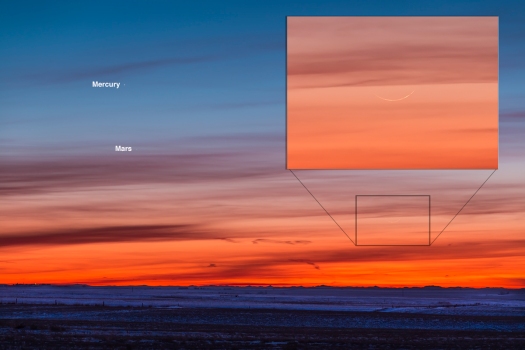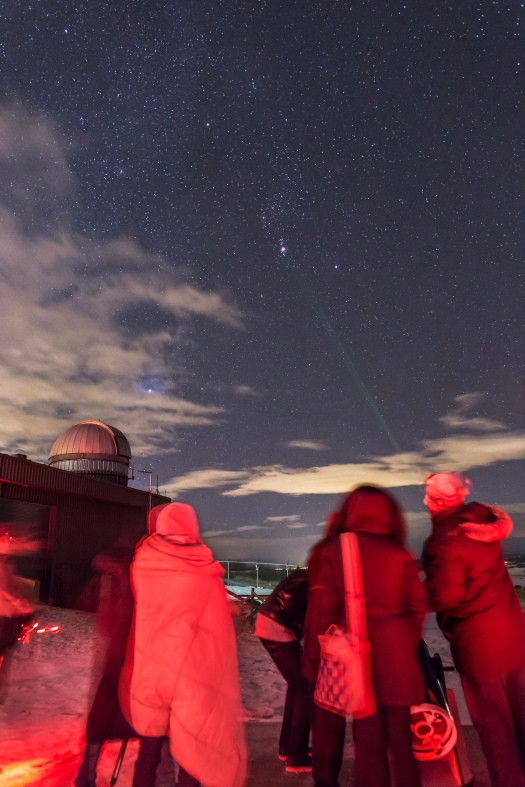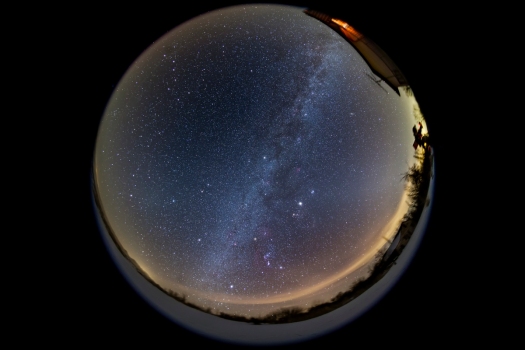
In this image I’ve tried to render the Milky Way in a view that simulates what you see with your unaided eyes.
The result is a celestial portrait in subtle shades of black and white.
This is a photo mosaic, but processed contrary to the usual methods – eliminating colour rather than enhancing it, and reducing contrast rather than boosting it. The result is a view that I think quite nicely matches what your eyes see, though certainly from a dark site. And in this case, you would need to be in the southern hemisphere to see this sweep of the Milky Way, from Aquila at left, to the Southern Cross at right, with the bright star clouds around the centre of the Galaxy in Sagittarius and Scorpius in the middle.
I’ve removed colours except for the muted colours of stars. And I’ve tried to render the stars with an intensity and dynamic range that the eye sees but that is often lost in long exposures.
The dark lanes of dust seen here really do look like this under dark skies. The nearby Coal Sack next to the Southern Cross does look a little darker than the rest of the sky. This view also captures another effect you can see in the real sky – the brighter sky below the Milky Way plane beneath Sagittarius and Aquila – there are more stars there, which make the background sky brighter than above the Milky Way plane (along the top of the photo) where the sky is permeated by dark obscuring dust.
This scene also frames the “dark Emu” – the shape drawn in the dark lanes that looks like a flightless emu in the sky. It’s an important “constellation” in Aboriginal mythology in Australia. The emu’s head is the Coal Sack at far right, her neck the long dark lane curving up through Centaurus and Lupus, and her tail the dark lanes at left in Ophiuchus, Scutum and Aquila.
I shot the original images for this panoramic mosaic in Chile in May 2011. You can see the full colour version in my “Milky Way Mosaic” post from 2011. The colours are wonderful. But there’s something enthralling about “capturing” the view more as your eyes – and mind – remember it.
– Alan, February 3, 2013 / © 2013 Alan Dyer











